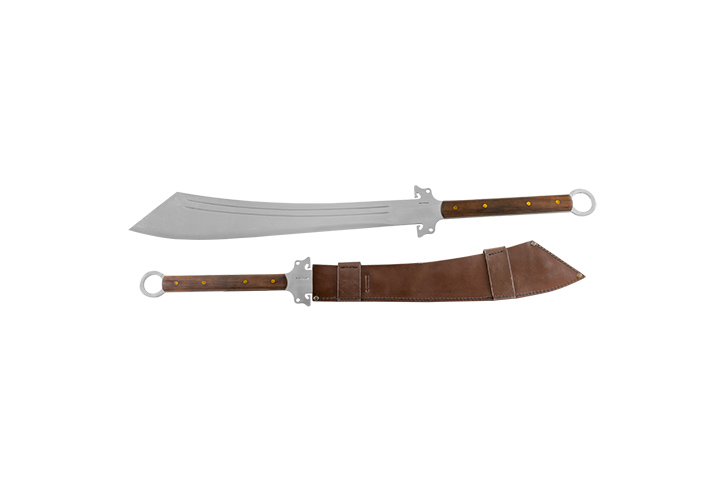Navigation
Install the app
How to install the app on iOS
Follow along with the video below to see how to install our site as a web app on your home screen.
Note: This feature may not be available in some browsers.
More options
Style variation
You are using an out of date browser. It may not display this or other websites correctly.
You should upgrade or use an alternative browser.
You should upgrade or use an alternative browser.
Needs to be reposted
- Thread starter Xue Sheng
- Start date
Xue- that is an excellent clip, well worth re-posting. It’s something worthy of some serious reflection. And it doesn’t have to be true if we really try to listen to each other, and discuss rather than argue!
BTW, didn’t you and I get into a silly argument like that some years back over whether da dao described a sword or a big knife? Or was that someone else? Anyway, just thought I'd confess, of course dao translates as knife wereas gim is a "sword". So you (if indeed it was you making the point) were right. On the other hand, in common English usage there really isn't much difference between a sword and a really big knife.
I thought it was interesting that the HEMA guys engage in the same debate regarding the messer - which is German for knife. Yet a messer was functionally a "sword" with some details in the construction of the handle that identified it as a knife. This was of importance because, I'm told, that legally a sword (such as a falchion) could not be carried by commoners, or some such rot. So by slightly altering the construction of the handle and calling the thing a knife, commoners could carry it. Whatever you called it, it did the same job.
Now look at the images below and see how similar the knives or swords shown are. So why did I get so personally involved in arguing over semantics? The video pretty well covers it. Sorry, Xue. And for the record, I know that dao means knife!
Da dao "Big knife":

Kriegmesser (War-knife):

Falchion (Single-edged sword):

BTW, didn’t you and I get into a silly argument like that some years back over whether da dao described a sword or a big knife? Or was that someone else? Anyway, just thought I'd confess, of course dao translates as knife wereas gim is a "sword". So you (if indeed it was you making the point) were right. On the other hand, in common English usage there really isn't much difference between a sword and a really big knife.
I thought it was interesting that the HEMA guys engage in the same debate regarding the messer - which is German for knife. Yet a messer was functionally a "sword" with some details in the construction of the handle that identified it as a knife. This was of importance because, I'm told, that legally a sword (such as a falchion) could not be carried by commoners, or some such rot. So by slightly altering the construction of the handle and calling the thing a knife, commoners could carry it. Whatever you called it, it did the same job.
Now look at the images below and see how similar the knives or swords shown are. So why did I get so personally involved in arguing over semantics? The video pretty well covers it. Sorry, Xue. And for the record, I know that dao means knife!
Da dao "Big knife":

Kriegmesser (War-knife):

Falchion (Single-edged sword):

Attachments
Xue Sheng
All weight is underside
Xue- that is an excellent clip, well worth re-posting. It’s something worthy of some serious reflection. And it doesn’t have to be true if we really try to listen to each other, and discuss rather than argue!
BTW, didn’t you and I get into a silly argument like that some years back over whether da dao described a sword or a big knife? Or was that someone else? Anyway, just thought I'd confess, of course dao translates as knife wereas gim is a "sword". So you (if indeed it was you making the point) were right. On the other hand, in common English usage there really isn't much difference between a sword and a really big knife.
I thought it was interesting that the HEMA guys engage in the same debate regarding the messer - which is German for knife. Yet a messer was functionally a "sword" with some details in the construction of the handle that identified it as a knife. This was of importance because, I'm told, that legally a sword could not be carried by commoners, or some such rot. So by slightly altering the construction and calling the thing a knife, commoners could carry it. Whatever you called it, it did the same job.
Now look at the images below and see how similar the knives or swords shown are. So why did I get so personally involved in arguing over semantics? The video pretty well covers it. Sorry, Xue. And for the record, I know that dao means knife!
Da dao "Big knife":

Kriegmesser (War-knife):

Falchion (Single-edged sword):

I have no idea, I'm old and forgetful and don't remember....no worries
dvcochran
Grandmaster
Excellent post and 100% on point. Thank you for posting.
And to keep the controversy going:
Report: U.S. kept secret chemical weapons finds in Iraq - CNN
And to keep the controversy going:
Report: U.S. kept secret chemical weapons finds in Iraq - CNN
Similar threads
- Replies
- 207
- Views
- 14K
- Replies
- 1
- Views
- 1K
Latest Discussions
-
Qinna/Chin na what are your training experiences?
- Latest: Kung Fu Wang
-
-
-
-

